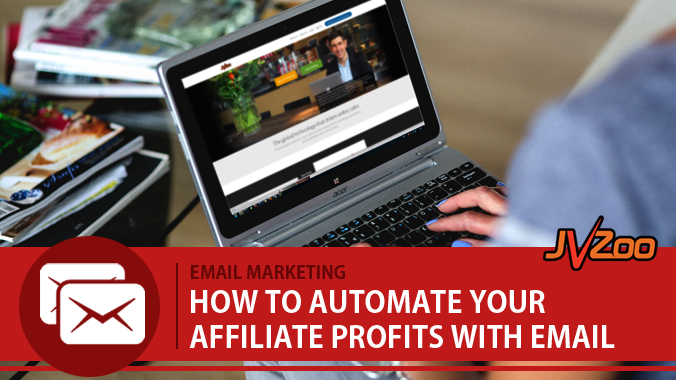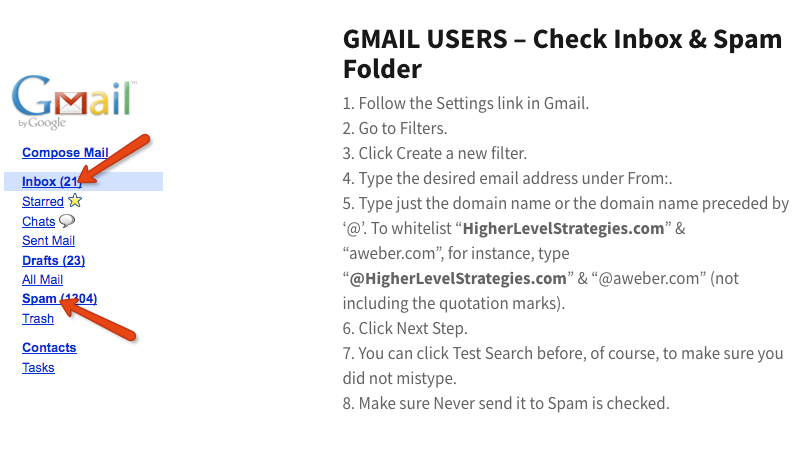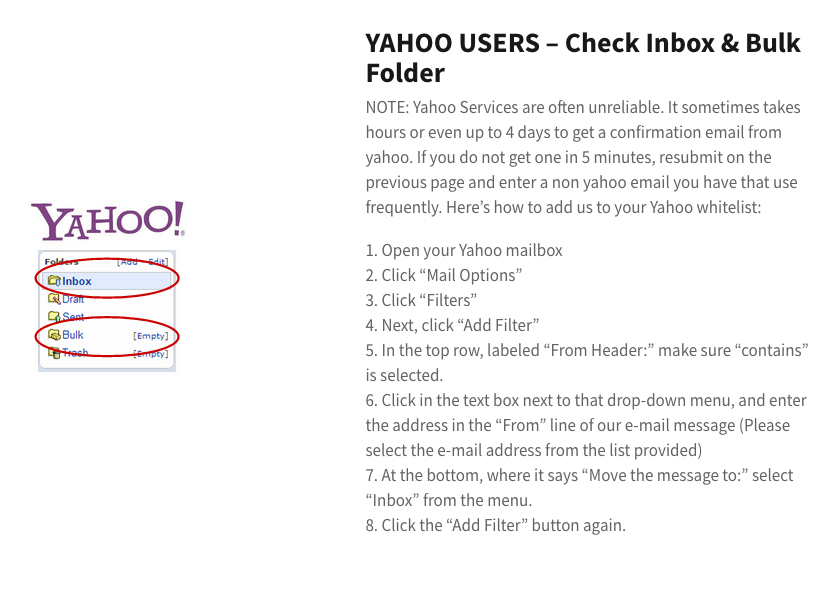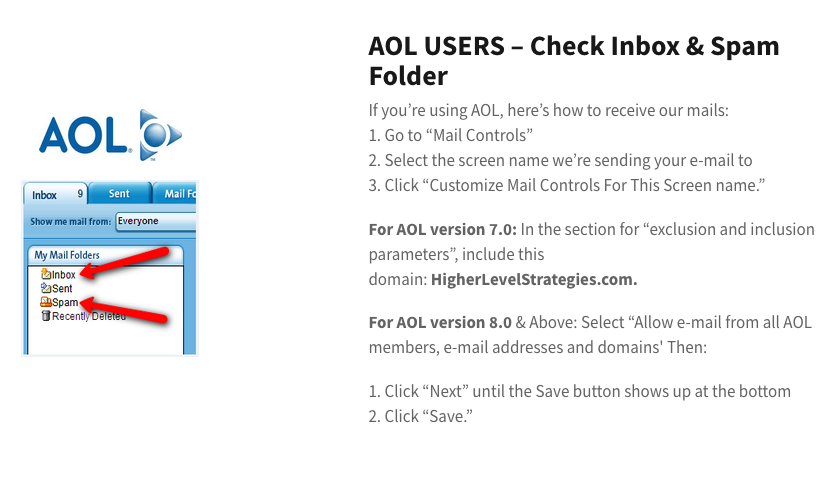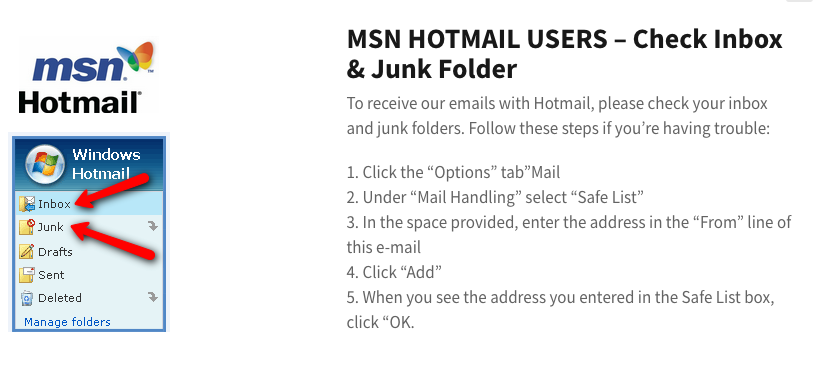Regardless of what niche you’re in, your auto-responder should be one of the first investments in your business. An autoresponder can also be one of the first systems that you use to automate your business. Email marketing is critical to your online business, so learning to manage the platform that stores your data and delivers your emails is a priority.
There are many auto-responder services to choose from, but generally speaking, they all operate in pretty much the same way. Each service allows you to create lists that allow subscribers to receive tailored messages. Lists are best used for managing the different types of relationships you must cultivate with each “type” of subscriber.

You’ll want to create separate lists for each of these subscriber types so that you can speak to them each differently. The messages you send to a prospect are different than those you send to someone who’s already bought the product. You never want to send promotional emails to your affiliates either.
PRO-TIP: You’ll want to make sure you give your lists very clear names. You don’t want to mix up your messages because you didn’t know what list you were emailing!
Most autoresponder services offer a powerful segmentation feature called an “automation rule”. Automation rules enable you to manage and change the relationship with your subscribers based on actions. For example, if someone opts into your prospect list on a squeeze page, then you’ll want to follow up with them to build trust and then ask for the sale. Once your prospect buys the product they are no longer a prospect, they are now a BUYER and thereby need to be transferred to a buyer’s list. That’s what an automation rule does for you.
The way you market to buyers should be different than how you market to prospects. You’ll want to set up automation rules inside your auto-responder to automatically move a subscriber from your prospect list to your customer list once they’ve bought. Although each auto-responder has different ways of managing the movement of subscribers, they rely on automation rules that you set to help manage your relationships.
Many auto-responders have two main ways of sending messages to your lists.

In a follow-up campaign, your subscriber will automatically receive a series of pre-written messages that you’ve scheduled to go out at an interval based on when they subscribed (usually daily). This feature is great for building trust over time with your subscribers. This works great on squeeze pages and for Exit Intent opt-ins. In these circumstances, you don’t know when someone will join the list, so it’s best to have a flexible system.
A broadcast message can also be sent to your list whenever you want, it can also be pre-scheduled but it isn’t triggered by the actions of the subscribers — it’s triggered only by setting the ONE TIME you want it to be mailed. A broadcast is great for mailing your affiliate offers, reminders about webinars, and other general information to your list.
PRO-TIP: Be very careful about sending broadcasts to prospects. Consider EXCLUDING certain lists from your broadcast. You need to build rapport over time with them. If you broadcast an affiliate offer to a prospect list, it may be too soon to ask them for a sale. Only mail prospects who have completed your trust-building email sequence.
Your auto-responder service is a long-term investment in your own business that, if managed properly, will allow you to automate an affiliate income stream. It’s important to structure your lists and provide the right content to each of them in accordance with the subscriber type. Remember to use the automation rules to remove buyers from your prospect list. Moreover, you’ll want to make sure you use your follow-up campaigns and broadcasts to maximum effect. Your auto-responder is one of your best friends in the business!
AN EMAIL FROM THE HEART IS THE BEST WAY TO START
When a vendor launches a product, they will generally provide pre-written emails designed to sell the product. These pre-written emails are commonly referred to as “swipes”. Swipes are helpful to use as a guide for writing your own emails. They will often include features and benefits that you can add to your emails to help sell the product. However, swipes should be taken with a grain of salt.
When writing emails for an affiliate campaign, it’s tempting to just use the swipes provided by the vendor. This can be especially true if you haven’t queued up your auto-responder and the launch is about to kick off! Consider this… those swipes are the same emails that every other affiliate is going to have access to. Your subscribers are likely to be on several other marketer’s lists so your messages will look the same if you use the default swipes.
Take the time to write messages that are your personal experience, especially if you’re selling a product that made a big difference in your business. For example, let’s say you’re an affiliate promoting a list building product. In the emails that you send out, you might consider talking about how you struggled to build a list in the beginning. You could also mention the things that were the most difficult for you and how the product you’re recommending just happens to solve those same problems. If necessary, you can use some of the features and benefits from the swipes to complete the message, but in general, many experts recommend sticking to your personal experience for a truly unique email.
Email marketing is your opportunity to continue to build your personal brand in the eyes of your subscriber. Don’t squander it by sending out the same duplicate email messages as everyone else who’s promoting the product. Use swipes as guides, but put your own spin on every message you send. It takes a little more thought, but it’s easy once you get the hang of it and it pays a lot better!
MAKE YOUR MESSAGES JIVE WITH SUBSCRIBER EXPECTATIONS
The key to keeping your subscribers happy is to make sure their expectations for the messages you’re sending are met. Satisfying the interests of the list and even the particular way in which you speak to your list (i.e. Free Prospects vs Buyers) is critical to your success. You’ll want to make sure that everything you present is relevant to your subscribers. This is called congruency.
Sometimes you’ll build a super-tailored list… one that’s only interested in a specific topic like video editing. Other times, you may have a much broader-focused list like affiliate marketing. Based on the known interest of your list, you can determine what offers you should mail and how you should position the product in the message. Remember that not every offer is a solid fit for your list, it’s prudent to promote products that are the “best fit” for your list.
Being an affiliate for multiple products throughout the year means you’re going to be exposed to a variety of vendor’s swipes. The vendors will generally write the swipes in their own voices. So for your emails to make sense your list, you’ll want to make sure to write them in your own voice — borrowing only the features and benefits and maybe a cool point or two from the vendor. Your customers expect to hear from YOU, not from strangers. To keep a congruent presence as an affiliate, you’ll need to unify the swipes with your own voice.
Another way to custom tailor an email campaign is in the length and timing of the message itself. For example, if you’re interested in getting your reader to click the link quickly, you don’t want to give them a long message explaining why they should click the link. This is very important when you’re in the last few hours of a launch. If it’s 11:00 PM and the launch closes at midnight, you may not want to force your subscriber to read a novel before you get to the point. On the other hand, if it’s only a day or two into the launch and there is still plenty of time to buy, you may want to provide additional value in your email to help make the decision easier.
Congruent writing will give you multiple benefits. It helps to establish your brand even when support other people’s products. It helps you identify what your list is most likely to buy. And finally, it helps you determine the right length for your message. Apply congruency to your emails and you’ll look like a hero!
IN CRUSH WE TRUST. AND SO SHOULD YOU.
The Crush Campaign is a very powerful email campaign made of 6 emails spanned over 3 days. Condensing the message intervals like this is one of the most powerful ways to boost sales through email marketing. It relies on the launch coming to an end. This doesn’t mean that the product will no longer be for sale (though sometimes that is the case). It may mean that after the launch is over, the price will increase and/or some of the bonuses may disappear. Due to fear of losing the best deal possible when the launch ends, your subscribers will go into a buying frenzy at the end.
The Crush Campaign starts in the last three days of the product launch. Typically this a Friday as many smart marketers end their launches on Sunday at Midnight.
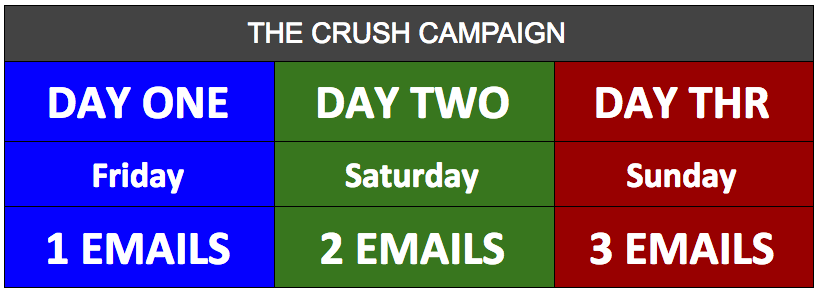
On Friday afternoon: you send out the first email, this is an email announcing that less than 72 hours remain in the offer. This is usually the longest of the 6 Crush Campaign emails. This email explains the product, the launch and the reason for the urgency.
Then on Saturday: a morning and evening message are sent. These emails focus on overcoming buyer apprehensions and objections while continuing to stress the urgency and scarcity of the campaign.
Finally, on Sunday: one email is sent in the early morning, one at noon and the last is typically sent at 10 PM announcing that only 2 hours remain. These emails are concise and get progressively shorter as the time is running out.
It’s the simple structure of the Crush Campaign that packs in the power, especially in the last hours. We’ve seen affiliates absolutely “CRUSH” the leaderboards in the last 6 hours of the launch simply because they set it all up for 3 days with a crush campaign.
PRO-TIP: You can do a 3 Day Blow Out or a holiday special using the Crush campaign. It’s just a hybrid of information and urgency for the first couple emails and then a transition to urgency.
It’s always a good idea to mail every day of a launch, not just the last three. The Crush campaign emails differ from the pre-Crush emails in a couple key ways. First, the pre-Crush campaign doesn’t have the same sense of urgency as the Crush campaign. In the pre-Crush emails, the core of the messages will simply explain the product and how it will benefit them. There may be some comments about the launch coming to an end, but that’s generally reserved for the postscript of the message.
In the Crush emails, the urgency is much higher and, aside from Saturday morning’s message, the amount of detail about the product is much less. During the Crush, it’s all about getting the customers to the sales page before the launch is closed.
PRO-TIP: Once the Crush campaign starts, many marketers will also link people to the sales page from the email (instead of going through the bonus page first). This helps instill greater urgency because they’ve already lost the opportunity to get additional bonuses.
Many marketers that use the Crush Campaign find that on the last day of the launch, they get the most sales. That’s due almost entirely to the fact that the launch is about to end. As a vendor, you will certainly want to keep the sales page open after the launch ends, but change the price and perhaps remove some bonuses. This way anyone who’s clearing out their emails on Monday morning will have the opportunity to buy, but won’t necessarily get the launch price or bonus.
The Crush campaign can be used by both vendors and affiliates to rake in sales. It’s a simple 1-2-3 structure that focuses on urgency and fear of loss to raise buying impulse. It’s a good idea to implement this structure on all of your launches and special offers.
EMAIL BREAKPOINTS CAN DESTROY YOUR INBOXING POWER
Getting your email to successfully land in your subscriber’s inbox is no longer an easy feat. You have to dodge sophisticated spam filters, get the subscriber to notice your email in a sea of messages from other marketers, and convince them to open without being shady about it. This requires knowledge of the breakpoints that will stop your message from being effective.
Pre-marketing is imperative if you want to make sure your messages are received in the first place. It doesn’t matter how good your subject line is, or how good your email copy is, if you don’t even make it to the inbox, nothing else matters. You can set yourself up for success by asking your customers and subscribers to whitelist your emails. You may also want them to add your email address to their contacts to ensure you messages never go into the spam folder. Telling the subscriber to expect your messages and take action to ensure they can see them is very important to making into the inbox.
JVZoo Pro Tip!
Get Them To Whitelist Your Email Address.
Consider adding instructions to whitelist your email on the Welcome page of your website. These instructions can be the first things you should do or similar guidance on the Welcome page. If you’re using a squeeze page to collect opt-ins, then place these instructions on the confirmation page.
Another common breakpoint is using the Double Opt-In feature that is the default on many autoresponders. A double opt-in means that after the subscriber submits their email address on your squeeze page, they will receive an email requesting that they confirm their subscription. Until they confirm, they won’t get your messages. Many people won’t confirm their subscription and after a certain period, they will be dropped from the list. This means your list building efforts will be for naught.
PRO-TIP: Consider disabling the forced double optin restriction that your autoresponder may place on a list by default. Using single opt-in will ensure your subscribers get your messages without further action on their part.
You’ll also want to avoid certain terms when writing your email copy. The spam filters on many email clients are very sophisticated. They’re designed to filter out emails that may potentially be unwanted. Because they scan the emails you’re sending, certain words will trigger the spam filter. For example, if you use the word ‘Viagra’ in your subject line or body, you’re likely going to get filtered. This also applies to characters like too many exclamation marks or excessive emojis.
You may want to use a secondary email address to verify that your emails are getting through spam filters. While you may test the email with the address associated with your auto-responder account, this might give you false positives. Pay careful attention to how your message is delivered. There are many breakpoints which lead to the spam filter. Remember to always check on a mobile device too! Be sure to use good judgment and above all, test your emails. Remember that just telling your subscriber to whitelist your emails will go a long way towards your deliverability.
LET THE NUMBERS GUIDE YOUR EMAIL MARKETING DECISIONS
Your auto-responder will give you valuable insights into how your email messages and campaigns are doing. You should be able to see open rates, click rates, bounces, complaints, and other factors you can use to control your business. You’ll want to review these numbers often and adjust your tactics and strategies accordingly.


A couple important factors you’re going to want to review are the open rate and the clicks. The open rate is the percentage of people who open your email after receiving it. This is usually around 10% – 25%, depending on the quality of your headline and the relationship you’ve established.
NOTE: To determine this percentage, you’ll have to look at the number of opens and divide that into the total number of people on the list(s) who received that message. Of those who open, you will see that a smaller number of people will actually click the link(s) in the message. The number of clicks divided by the number of opens is your “click-through” rate. OR just toggle the display settings on your autoresponder stats to show percentages instead of numbers.

PRO-TIP: You’ll also want to monitor your bounce rate. A “bounce” is when an email is returned as ‘undeliverable’. You’ll want to remove those addresses from your list.
Now, you will likely see another statistic that’s very unnerving to new marketers — the number of unsubscribes. With every email you send, you’re very likely to get an ‘unsub’ or two. That’s just part of the business. In fact, every message you send must have an unsubscribe link, that’s the law. But look, unsubscribes are simply part of the email marketing business so don’t let it get you down. Once someone has decided to unsubscribe, they’ve also decided not to buy anything from you. So why send them a message to sell them something?
Instead, focus your energy on improving your subscription rate. Drive more people to your squeeze page or to your sales page. Focus on taking care of the people on your list. Educate them. Entertain them. Keep giving them reasons to read your emails and click your links.
With all the numbers you have at your disposal, you’ll want to constantly monitor your numbers so you can improve your campaigns. Watch what happens when you use certain headlines. Consider exporting your data and placing it in a spreadsheet so you determine patterns of success. Above all, be a student of your campaigns and be willing to try new headlines, fonts, emojis, and other tactics to improve your opens and clicks.
Knowing your numbers is important in all areas of business. But it’s especially important if you’re relying on email marketing to pay your bills. You’ve got to make sure that your message is getting through to people. And that means you’ve got to get them to open the email and read it in the first place. If you’re monitoring your numbers, you’ll be able to determine what works and what doesn’t. You can then adapt accordingly.
Affiliates: Have you requested to receive news of the hottest selling products in the marketplace each day? If not, what are you waiting for?
Click here to subscribe now!

